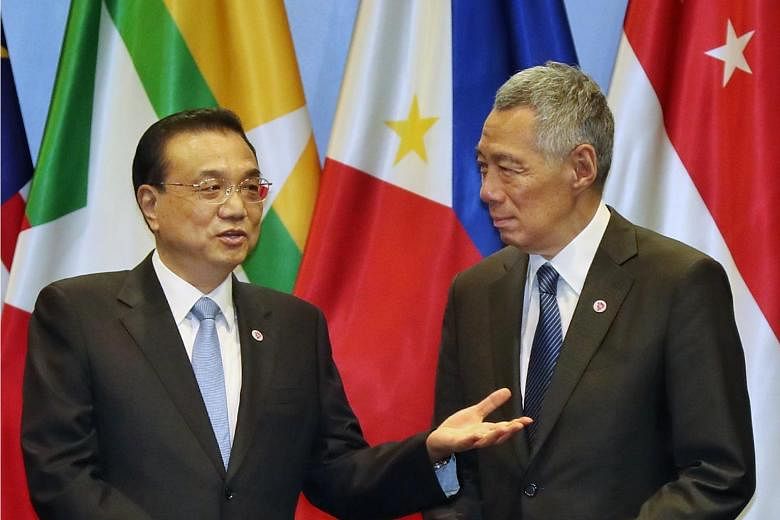SINGAPORE - Asean countries and China should aim to complete talks on a code of conduct (COC) for the South China Sea in three years, even if negotiations prove to be tough and complicated.
A day after Chinese Premier Li Keqiang said he hopes to see consultation on the maritime accord sewn up in three years, Prime Minister Lee Hsien Loong agreed that parties to the pact should keep to that timeline.
At the Asean-China Summit at the Suntec convention centre on Wednesday (Nov 14), PM Lee said he was encouraged by the good progress made in the negotiations for the code, which sets out norms for behaviour in the contested waters, started earlier this year.
Brunei, China, Malaysia, the Philippines, Taiwan and Vietnam all stake overlapping territorial claims in the disputed waterway.
"There will be complex and challenging negotiations, we should aim for the completion of the first reading of the code of conduct in 2019, and to complete it in three years as mentioned by Premier Li Keqiang," Mr Lee said at the meeting between the 10 leaders of Asean and Premier Li.
"In the meantime, all parties should maintain restraint, keep a conducive and stable environment for the COC negotiations to proceed smoothly," he added.
In his opening remarks at the meeting, Premier Li said China is ready to work with the South-east Asian nations to reach a deal on the code, which he said will "contribute to peace and stability in the South China Sea and be conducive to free trade".
In taking stock of the Asean-China relationship, Mr Lee said the regional grouping and its East Asian neighbour share substantial and mutually beneficial ties, and their economic links have strengthened over the years. China has been Asean's top trading partner for eight consecutive years.
Last year, the grouping's merchandise trade with China reached US$442 billion (S$610 billion), accounting for 17 per cent of Asean's total merchandise trade.
The Asean-China free trade agreement was given an upgrade in 2015, and negotiations on the Regional Comprehensive Economic Partnership (RCEP) which China and Asean are members of, are "close to the finishing line".
The two sides also completed the first Asean-China maritime exercise last month.
Mr Lee made three suggestions to keep the momentum of positive Asean-China relations going: To continue to demonstrate the strongest commitment to multilateral trade and economic cooperation; to continue to engage in dialogue and practical cooperation to enhance peace and stability in the region; and to continue to identify new areas of collaboration.
Besides the free trade agreement, fully liberalising the Asean-China Air Transport Agreement is one way of connecting the economies and drawing them closer, as will mobilising private capital and the use of financial institutions, such as the Asian Infrastructure Investment Bank and the Asian Development Bank, to plug Asean's infrastructure financing gap, said Mr Lee.
As for new collaborations, China and Asean have committed to working closer together in technological innovation and digital economy, as well as developing smart cities.
The two sides adopted at this summit an Asean-China Strategic Partnership Vision, which charts the direction of relations up until 2030.


